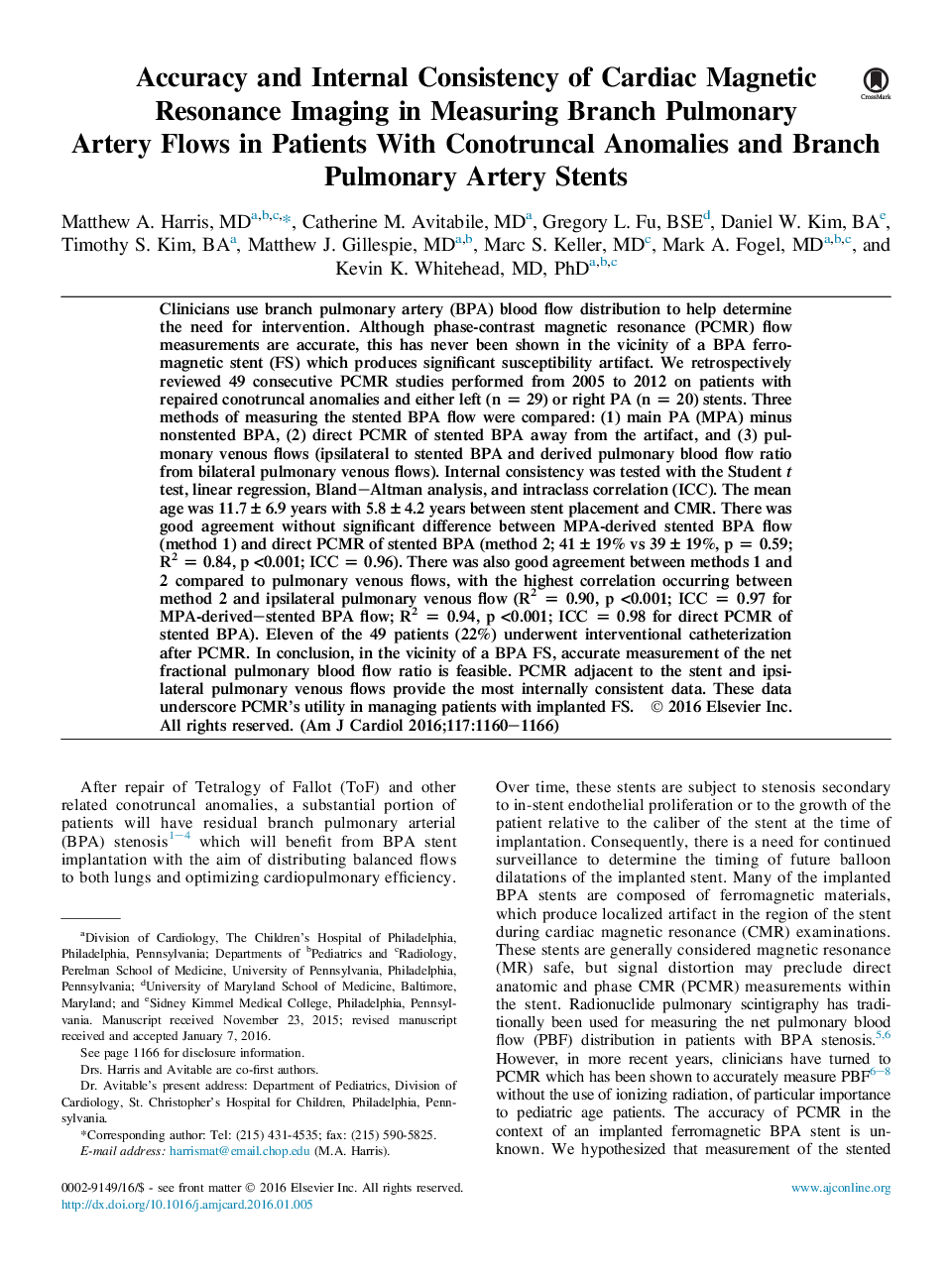| کد مقاله | کد نشریه | سال انتشار | مقاله انگلیسی | نسخه تمام متن |
|---|---|---|---|---|
| 5929678 | 1572116 | 2016 | 7 صفحه PDF | دانلود رایگان |
Clinicians use branch pulmonary artery (BPA) blood flow distribution to help determine the need for intervention. Although phase-contrast magnetic resonance (PCMR) flow measurements are accurate, this has never been shown in the vicinity of a BPA ferromagnetic stent (FS) which produces significant susceptibility artifact. We retrospectively reviewed 49 consecutive PCMR studies performed from 2005 to 2012 on patients with repaired conotruncal anomalies and either left (n = 29) or right PA (n = 20) stents. Three methods of measuring the stented BPA flow were compared: (1) main PA (MPA) minus nonstented BPA, (2) direct PCMR of stented BPA away from the artifact, and (3) pulmonary venous flows (ipsilateral to stented BPA and derived pulmonary blood flow ratio from bilateral pulmonary venous flows). Internal consistency was tested with the Student t test, linear regression, Bland-Altman analysis, and intraclass correlation (ICC). The mean age was 11.7 ± 6.9 years with 5.8 ± 4.2 years between stent placement and CMR. There was good agreement without significant difference between MPA-derived stented BPA flow (method 1) and direct PCMR of stented BPA (method 2; 41 ± 19% vs 39 ± 19%, p = 0.59; R2 = 0.84, p <0.001; ICC = 0.96). There was also good agreement between methods 1 and 2 compared to pulmonary venous flows, with the highest correlation occurring between method 2 and ipsilateral pulmonary venous flow (R2 = 0.90, p <0.001; ICC = 0.97 for MPA-derived-stented BPA flow; R2 = 0.94, p <0.001; ICC = 0.98 for direct PCMR of stented BPA). Eleven of the 49 patients (22%) underwent interventional catheterization after PCMR. In conclusion, in the vicinity of a BPA FS, accurate measurement of the net fractional pulmonary blood flow ratio is feasible. PCMR adjacent to the stent and ipsilateral pulmonary venous flows provide the most internally consistent data. These data underscore PCMR's utility in managing patients with implanted FS.
Journal: The American Journal of Cardiology - Volume 117, Issue 7, 1 April 2016, Pages 1160-1166
